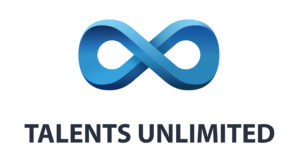Onboarding
Onboarding – When it’s effective on an individual basis
Research shows that on average, it takes a new hire 80 days to reach typical production levels. During that time, the employee is on average 30% less efficient.
This can end up costing many weeks’ wages if a new hire is slow to develop, has challenges with their line manager and/or colleagues, or if they are often attracted to other types of tasks.
When that fact is combined with the knowledge that many employees leave within the first year, it suddenly seems expensive not to select employees properly – and then not to onboard them in a satisfactory manner.


Onboarding as a management discipline
Unfortunately, we often see that many companies believe that an IT system alone can ensure good onboarding. The only resources dedicated to the process are things like videos or written preboarding material. While this is a sensible first step towards getting the employee off to a good start, it cannot stand alone and should only count as a small part of onboarding.
It’s important to remember that onboarding is a management task and that it is a relational phenomenon. It is precisely the socialization of the employee in relation to their work tasks, their manager and the new organizational culture that forms the core of onboarding.
The talent test as a starting point
So what if you want to onboard new hires in the best possible way? Of course, you need to take care of the practical details in the traditional onboarding model, but that’s not enough. Individual onboarding initiatives should be planned based on the employee’s talent profile, which can be uncovered using the TT38 test.
For example, if you have an employee who is a learner, researcher and context seeker, you need to make sure they feel properly prepared before starting work immediately. On the other hand, a goal-oriented, starting and flexible employee would rather be thrown headlong into the job, as too much “schooling” demotivates them and they risk a bad start.
Customizing rather than standardizing the onboarding process based on each individual’s talents is crucial and you’ll see faster and better than average performance.

DID YOU KNOW?
A META-ANALYSIS OF 1.2 MILLION PEOPLE SHOWED THE FOLLOWING RELATIONSHIP BETWEEN TALENT-BASED EMPLOYEE DEVELOPMENT AND COMPANY OUTPUT:
– Customer engagement: 3.4-6.9% increase
– Employee engagement: 9.0-15.0% increase
– Profit: 14.4-29.4% increase
– Sales: 10.3-19.3% increase
– Low churn: 5.8-16.1% reduction
– High churn: 26.0-71.8% reduction

